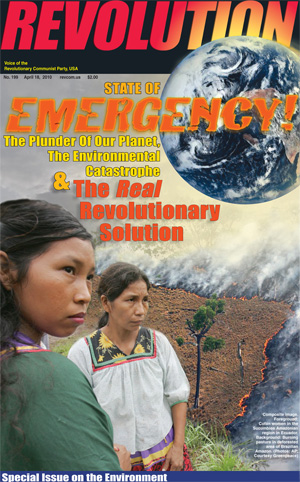Scientists Say One Million Species Face Extinction
Capitalism-imperialism is Strangling Life on the Planet
| revcom.us
Editors’ Note: Below is a lightly edited excerpt of a letter from volunteer correspondents for revcom.us. We appreciate correspondence from our readers on what is increasingly emerging as an existential crisis facing humanity and the planet, the destruction of the environment that is caused, shaped, and accelerated by the workings of this capitalist-imperialist system.
The world’s scientific community is warning, once again, that the planet is on a disastrous course. “Nature is declining globally at rates unprecedented in human history—and the rate of species extinctions is accelerating—with grave impacts on people around the world now likely.” This is a finding of a summary report released on May 6, from the United Nations’ Intergovernmental Science-Policy Platform on Biodiversity and Ecosystem Services (IPBES). The full report is scheduled to be released later this year.
According to the report, written by 145 expert authors from 50 countries, drawing on 15,000 scientific sources, “Around 1 million species already face extinction, many within decades unless action is taken to reduce the intensity of drivers of biodiversity loss. Without such action there will be a further acceleration in the global rate of species extinction, which is already at least tens to hundreds of times higher than it has averaged over the past 10 million years.”1
So far as we now know, the Earth is the only planet that has life (though scientists are actively searching for signs of life elsewhere in the universe). All of life on this planet is the product of an extraordinary process of evolution since the first emergence of life 3.5 billion years ago. Every living thing is a product of this process—and each species with ancestry in earlier species. There is a uniqueness and beauty and irreplaceability to each species—to how it lives and relates to other species, and to the environment overall. Once destroyed, species are gone forever.
Humanity is a part of nature. We evolved together with, and are dependent on, the physical environment and its interaction with living things. Nature provides humanity with food, water, materials for shelter, trees and plants that take carbon dioxide from the air and produce oxygen for us to breathe, and on and on.
Wilderness is also important in its own right, and also has great importance for people and for human society—exploring the relatively unknown, experiencing adventure and solitude. Nature and wilderness open us up to a certain kind of beauty, and a certain kind of awe and wonder.
The natural world is tied together in interconnected webs of living things, which in conjunction with their physical environment are known as ecosystems. Organisms in ecosystems are interdependent. If one or more key species are destroyed, the whole thing can unravel and the ecosystems can collapse. Significant amounts of global food crops rely on pollination by insects, such as bees. If these insects disappear then crops and plants that rely on pollination will die, as will the animals that eat those plants, including human beings.
There is real danger of a cascade of negative effects being set in motion that can affect the health of the whole planet. Add up enough ecosystem collapses in local or regional scales and you can have collapse of the global ecosystem. There have been five major mass extinctions in the history of plant and animal life on the planet, which killed off the majority of species. There were different causes of each one, and each time it took life millions of years to recover, and to re-establish itself in a new way. Many scientists raise the concern that we are entering a potential sixth mass extinction; this is the first time it is the action of human society itself driving the extinction.
“The health of ecosystems on which we and all other species depend is deteriorating more rapidly than ever. We are eroding the very foundations of our economies, livelihoods, food security, health and quality of life worldwide,” said the IPBES chair, Sir Robert Watson, in a statement on the release of the summary.
An “Ominous Picture”
“The overwhelming evidence of the IPBES Global Assessment, from a wide range of different fields of knowledge, presents an ominous picture,” the IPBES chair continued.
Among the report’s findings:
- 300-400 million tons of heavy metals, solvents, toxic sludge ,and other wastes from industrial facilities are dumped annually into the world’s waters.
- Plastic pollution in oceans and seas has increased tenfold since 1980 affecting at least 267 species, including 86 percent of marine turtles, 44 percent of seabirds, and 43 percent of marine mammals.
- Fertilizers entering coastal ecosystems have produced more than 400 ocean “dead zones,” areas where there is not enough oxygen to sustain life.
- Coral reefs have declined 50 percent in the last 150 years. All but one percent may be lost in the next decades if climate change continues. (The northwest Hawaiian Island coral reefs alone support 7,000 species of fish, invertebrates, plants, sea turtles, birds, and marine mammals.)
- Up to $577 billion in annual global crops are at risk from the loss of insects, like bees that plants rely on for pollination.
- In 2015, one-third of marine fish stocks were being harvested at an unsustainable level.
This is just a small sample of what is in the report and what is going on in the world.
Driving Factors
The report summary identifies five factors driving extinction and biodiversity loss: changes in land and sea use, unsustainable overuse, climate change, pollution, and invasion by non-native species.
The report authors view these drivers as policies that can be changed by governments, and hope that serious changes in policy within our current ruling system can reshape the way human society relates to the planet. But the truth is that we face a much deeper problem than even very serious policy changes can touch. These drivers of extinction are themselves, in large part, propelled by the basic needs and compulsions of the profit-driven system of capitalism-imperialism that now strangles the planet.
Look at wetlands. These are areas where land is often covered by water such as marshes and ponds, or the delta at the mouth of a river. They often support high concentrations of animals—including mammals, birds, fish, and invertebrates—and serve as nurseries for many of these species.
But under capitalism, these rich ecosystems are increasingly destroyed, considered swampland that needs to and can be drained to make room for “productive” farms, industry, or residential development. These farms, in order to maximize profit, use all sorts of toxic fertilizers and pesticides, which poison the land and water. Or cities and industrial development produce all kinds of pollution, including carbon dioxide, which furthers climate change. When extreme weather events due to climate change cause rivers or seas to rise, wetlands are not there to be able to absorb the water, as they had previously done, and farms are ruined and cities devastated.
The report mentions that global trade has increased 10 times in the last 50 years. This itself is the product of globalization under capitalism-imperialism, where goods produced cheaply in the sweatshops of the Third World are transported worldwide in huge container ships consuming massive amounts of fuel oil, contributing to pollution and global warming. It necessitates increased infrastructure such as roads and pipelines that split up ecosystems—for example, making it impossible for animals to travel with changes in seasons.
Global trade increases the spread of invasive species (those that are not native to a region) Invasive species have increased by 70 percent since 1980, disrupting ecosystems and often doing great damage. For example, a single invasive pathogen spread in part by the massive expansion of trade, Batrachochytrium dendrobatidis (Bd), has caused the extinction of at least 200 species of frogs around the world. Over 350 amphibian species (amphibians include frogs and salamanders) are now threatened by Bd. Amphibians were among the first animals to come onto the land from the sea in the evolution of life on the planet, and they have been around for hundreds of millions of years. Another example—sudden oak death, caused by the invasive Phytophthora ramorum, is estimated to have killed up to one million trees in California and Oregon.
The IPBES summary says that climate change is “increasingly exacerbating the impact of other drivers.” The authors bring out that “many species are unable to cope locally with the rapid pace of climate change, either through evolutionary or behavioral processes, and that their survival will also depend on the extent to which they are capable of dispersing, of following the appropriate climatic conditions and of preserving their capacity for evolution.”
The main “drivers” are products of the development of capitalism. For example, revcom.us has analyzed the causes of climate change many times: the burning of fossil fuels releases planet warming gases into the atmosphere. This system can’t stop using these fossil fuels because blocs of capital are forced to ruthlessly compete with each other for maximum returns and strategic advantage, driving them to use the cheapest and most widely available sources of energy.
“Transformational Change” or Revolution
The report calls for what its authors call “transformational change.” They define this as “a fundamental, system-wide reorganization across technological, economic and social factors, including paradigms, goals and values.” The report recognizes that such a “fundamental reorganization” is needed. But what it omits is the impossibility of achieving this within the basic framework of capitalism.
Biologists and environmental scientists know a lot about what is needed to stop the destruction of biodiversity and nature, but their thinking and proposals repeatedly run smack up against the profit-above-all relations that dominate economic and social life on the planet and that constrain humanity from acting in the way it must to preserve the environment.
For example, important scientific work preceded international agreements such as the Paris climate change accord, as well as international agreements to protect biodiversity. There are possible solutions to the problem of the injection of carbon dioxide into the atmosphere—but they are not profitable under capitalism and are blocked by the core ways the system works. Five years after the Paris climate agreement, not a single large country is on track to meet the goals that they agreed to, and those goals were never strong enough to start with.
The IPBES report points some to examples of relatively small-scale local changes to protect bio-diversity, but this is not happening on a large enough scale for it to be meaningful over the long term. Some of these problems are not that difficult to solve—the massive destruction of the rain forest and building up of palm oil plantations are key factors driving orangutans to extinction. Scientifically, it is obvious that a huge step in saving the orangutans would be to stop destroying the forests. But it is enormously profitable to cut them down and this rules under this system no matter the effects on animals and the environment.
It is not possible to pressure or change capitalism-imperialism into operating in a way which takes nature and the environment into account. The system has a logic or rules that cannot be pushed aside or ignored, or the very functioning of the system itself breaks down.
Because of its privately owned and controlled character, and flowing from the life-and-death competition between different capitals, there can be no conscious, society-wide coordination of production. There can be no long-term planning to take into account ecological impacts.
Under capitalism, nature itself and its products are turned into something to be bought and sold, or something to be taken for granted and exploited. To capitalism, tigers and orangutans (or air and water) are simply “externalities.” What this means is that environmental damages and the limited amount of resources don’t get counted—these are “external” to capitalism’s account books, and do not determine what the system does in its “eat or be eaten” competitive battle. Even as capitalist development destroys the very things it needs—air, water, climate, etc.—it cannot do otherwise as long as capitalism exists.
This is why this system cannot be changed through policy changes that leave the system intact. Only a revolution that overthrows this system and opens up the possibility of a radically different, and much better, system, can actually make the kind of changes that are needed.
The new report from the IPBES points out just how urgent the situation is. We must STOP capitalism-imperialism from destroying the planet.
For more on a revolutionary approach, go here.
1. Some analyses put the rate much higher, as much as 1,000 to 10,000 times the background rate. [back]
Trump/Pence Regime Seeks to Profit from the Melting of Polar Ice
Under capitalism, even environmental catastrophes are seen as opportunities for profit. On the same day as the IPBES summary was released, U.S. Secretary of State Mike Pompeo, speaking at a meeting of the Arctic Council in Finland, salivated over the profits to be made from the melting of polar ice, one of the greatest planetary dangers caused by climate change. “It houses thirteen per cent of the world’s undiscovered oil, thirty per cent of its undiscovered gas, an abundance of uranium, rare-earth minerals, gold, diamonds, and millions of square miles of untapped resources, fisheries galore,” Pompeo gushed. “Steady reductions in sea ice are opening new passageways and new opportunities for trade.... Arctic sea lanes could become the 21st century Suez and Panama Canals.”
Trump has made a major priority of his fascist regime weakening environmental protections on the air and water and challenging the scientific consensus on climate change. Secretary of the Interior David Bernhardt is working hard to weaken the Endangered Species Act, arguing in an op-ed that it places an “unnecessary regulatory burden” on companies. Bernhardt had worked to block a report by scientists at the Fish and Wildlife Service that found the use of three popular pesticides could jeopardize the continued existence of more than 1,200 endangered animals and plants. For the sake of humanity and the planet, the Trump/Pence regime must be driven from power.
What the Trump/Pence regime takes to repulsive extremes has always been the underlying, driving compulsion of capitalism, here and all over the world.
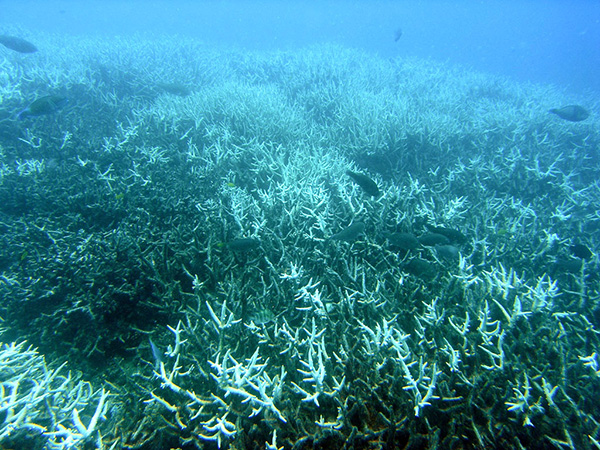
Coral reefs have declined 50% in the last 150 years. All but 1 percent may be lost in the next decades if climate change continues. The Northwest Hawaiian Island coral reefs alone support 7,000 species of fishes, invertebrates, plants, sea turtles, birds, and marine mammals.
Faces of Endangered and Extinct Species
The Sumatran Orangutan
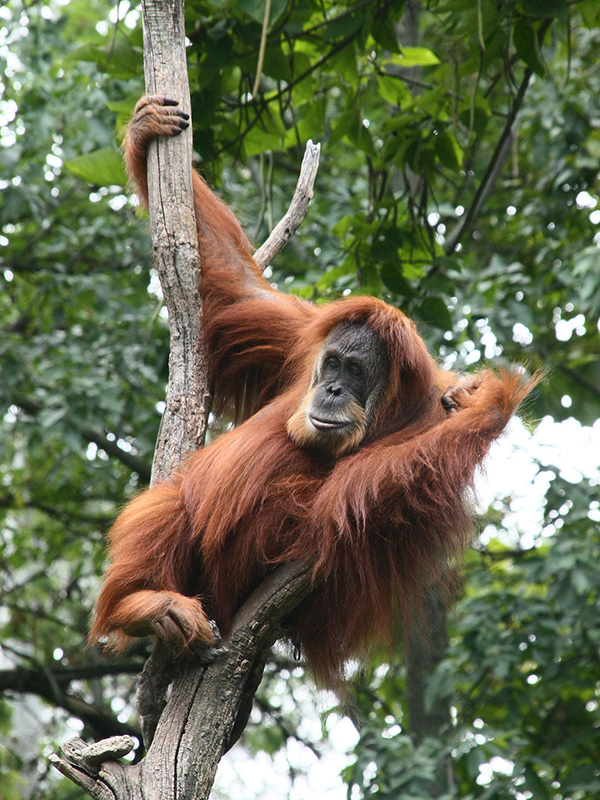
The Sumatran orangutan lives in the trees of tropical rain forests of Sumatra. Groups of Sumatran orangutans come together to feed in the tops of fig trees and rarely come down. They play a crucial role in spreading the seeds throughout the forest (after they pass through the digestive system). There are currently only nine populations of Sumatran orangutan and it is listed as critically endangered.
The International Union for the Conservation of Nature estimates that almost 50 percent of the world’s primate species—the group that contains monkeys, lemurs, apes, and humans—are at risk of extinction. About 90 percent of primates live in tropical forests—one of the richest sources of biodiversity—which are fast disappearing. Rain forests in the Amazon have been cut down to make way for cattle production and to grow soybeans. And this process has also destroyed traditional agriculture and the livelihoods of hundreds of millions of farmers and peasants. Tens of millions have been driven into the mega-slums of the cities; others have only been able to resume farming by moving into and clearing forest.
Golden Toad
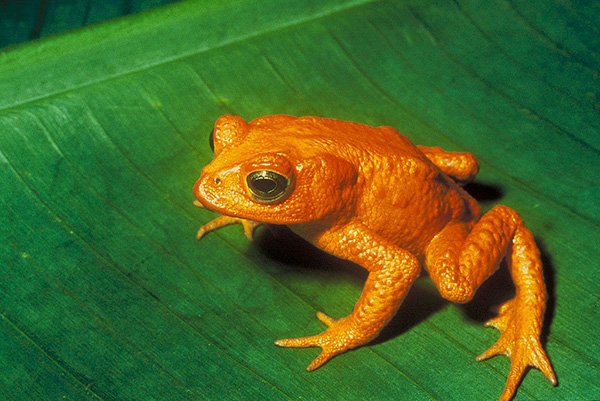
One scientist who studied the golden toad described them as “dazzling jewels on the forest floor.” The golden toad was last seen in 1989 in a Costa Rican cloud forest, and five years later it was declared extinct. The main theory on what drove the golden toad extinct is that rain forests became hotter and dryer in the mid-1980s. These conditions made the toad vulnerable to the chytrid fungus, a fatal skin disease. More than 40 percent of amphibian species are threatened by extinction.
Some Key Principles of Socialist Sustainable Development
These key principles, though not exhaustive, concentrate an orientation that enables socialist society to begin to tackle the environmental emergency with a global and internationalist perspective. In putting these principles before people today, we hope to open up debate and discussion that can contribute towards raising understanding of what we are confronting—and raise sights about the viability and desirability of communist revolution.

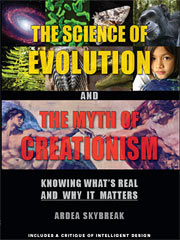
The Science of Evolution
and the
Myth of Creationism
Knowing What's Real and Why It Matters
by Ardea Skybreak
"This book will be of tremendous benefit to many..."
– Richard Leakey
CONSTITUTION For The New Socialist Republic In North America
(Draft Proposal)
Authored by Bob Avakian, and adopted by the Central Committee of the RCP
Get a free email subscription to revcom.us:


